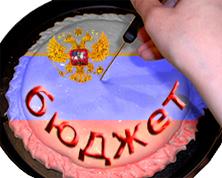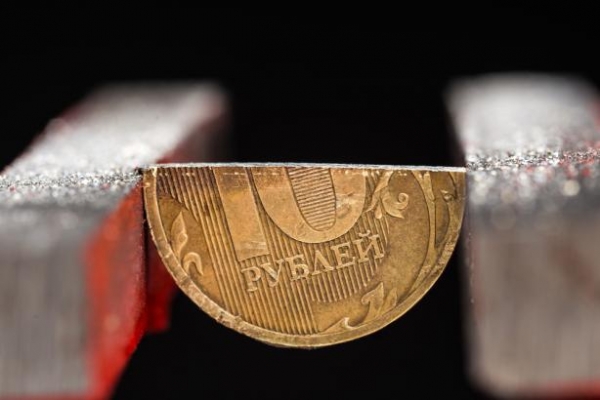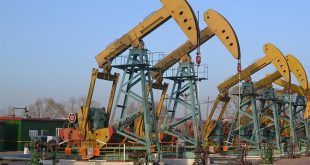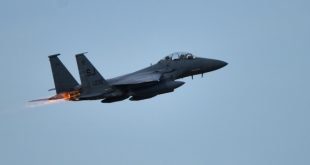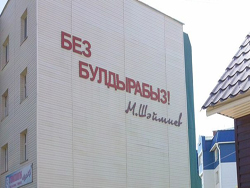
A new economic crisis once again has convincingly proved that the basis of the stability of the economy of Tatarstan remain the production of hydrocarbons and related the petrochemical industry. If not for these two industries, the economy of the Republic last year would have faced a serious decline. At the same time, recessionary tendencies emerged in Tatarstan for a long time — a compelling rate of growth of the economy of the region does not show since 2013, so the plan is to meet this year GRP 2 trillion — may be left unfinished. The main reason seems to be that the Tatarstan economy is increasingly dependent on external factors, which affect the authorities of the Republic completely unable.
Chronic symptoms
At first glance, last year, became for the Russian economy the most difficult test since the last crisis of 2008-2009, for Tatarstan ended without special shocks. In the latest annual survey of quality of life in Russian regions Agency “RIA Rating” the Republic once again took fourth place, behind only Moscow, St Petersburg and the Moscow region. According to authorities statistics, the industrial production index in 2015 year made in Tatarstan 100,4% to the previous year (which in General looks good against the all-Russian industrial decline and significantly better than in 2009 when the industry fell by 4.4%). Gross regional product, according to preliminary data, also remained at the same level in 2014 — more than 1.8 trillion rubles (in the country as a whole, GDP fell by 3.7%).
However, the growth rate is close to zero, are not acceptable for the economy of Tatarstan even in the case when not the best way things are in other regions, say, the nearest neighbors (for comparison, the average for the Volga Federal district the industrial production index in 2015 amounted to 96,4%). In order to reach the target set at the end of 2011 President of Tatarstan Rustam Minnikhanov, is 2016 the year to reach a GDP of 2 trillion rubles — the regional economy needs to grow much faster.
Not to say that all the fault of the notorious sanctions — braking of economy of Tatarstan began three years ago, before the annexation of Crimea and the beginning of the sanctions war. You may recall that even the year 2013, when the growth rate of gross regional product dropped by more than half (from 5.5 to 2%), and the dynamics of industrial growth in General has decreased four-fold (from 6.9 to 1.7%), Rustam Minnikhanov called a failure and demanded urgent anti-crisis measures. “We cannot accept a growth rate of 1-2 percent, it is not for us,” said he.
However, in 2014 the dynamics of the industry continued to decline (plus 1.3 percent) — in other words, the crisis of Tatarstan felt for a long time. This was evidenced and the increasing losses of enterprises of the Republic, which continued to accumulate last year: only for 8 months almost a quarter of the Republican enterprises suffered losses in the amount of 45 billion rubles. “This is a big number” — declared the President of Tatarstan in his speech in November last year.
In 2013, the Tatarstan economy gave another alarm signal: the growth of retail turnover declined to 3.4%, while a year earlier the trade was haloperidol, showing a turnover increase of 16.4 per cent. In 2014, the decrease of the dynamics of growth of trade continued (only 2.3%), and last year retail sales dropped by 12.8% with a similar rate of inflation. This dramatically increased households ‘ overdue debt on loans: if, according to the CBR, as of 1 February 2014, it was $ 11,161 billion, two years later increased to 20,125 billion rubles. However, in the latter case, Tatarstan is not alone: a comparable volume and dynamics of the delay and the neighbors — the Samara region and Bashkiria.
KamAZ hit the brakes
As during the 2009 crisis, the most problematic segment of the economy of Tatarstan last year was the engineering, the flagship of which is KAMAZ. According to Rosstat, the index of production of freight cars in the Republic amounted to 69.7 per cent from the level in 2014. According to the calculations of the Agency “AUTOSTAT”, sales of JSC “KAMAZ” for the year fell by a third, in absolute units, sales amounted to more than 29 thousand trucks.
In March of published accounting statements of the company for the year 2015, it follows that the revenue of KAMAZ in comparison with the year 2014 decreased by 17% (up to 86.7 billion rubles) and net loss has increased almost 8 times — up to 3.3 billion roubles. Moreover, as reported in a recent interview with the CEO of the company Sergey Kogogin, this is less than was assumed in the business plan, because in the framework of the program of reduction of costs for the year were savings of more than 17 billion rubles.
In addition, KAMAZ has gone on a major staff cuts for 2015 the number of employees decreased by 2,800 people. Although things could be much worse — according to Kogogin, taking into account the situation on the market were required to reduce 10 thousand persons. However, against such succession of events is strictly made Rustam Minnikhanov has declared that KAMAZ is already condensed enough staff, and the number of employees, which is necessary for KAMAZ kept its markets.
From the point of view of the share of the Russian market, 2015 year really became for KAMAZ good, despite the drop in revenue and increase in loss. If in 2014 the total number of registrations of heavy trucks in Russia, the share of enterprises of Naberezhnye Chelny was 41%, following the results of 2015 reached 51%. At the same time significantly increased exports of Russian trucks to Turkmenistan, Vietnam, UAE, Lithuania and other countries.
However, the prospects of a quick recovery in domestic demand, as during the last crisis, now is not expected. “We believe that the market situation will be largely similar to the year 2015, said in a recent interview Sergey Kogogin. — First of all, the demand for trucks will remain quite low… Not expected to significantly increase demand from the largest consumers of trucks — commercial carriers and the construction industry”.
Known left economist, head of the center for economic research Institute of globalization and social movements Vasily Koltashov considers the reasons for the difficult situation in which there was not only KAMAZ, but also other machine-building enterprises of the region, the monetary policy of the Russian authorities. Now the engineering is paying the price for economic policy at the Federal level, the expert believes: “After the crisis of 2008-2009, the Federal guidance prevails the line “less to grow — less fall”, which resulted in an expensive cost of credit. We gradually entered into a new recession by 2013, because at this rate, money is not of significant investment and infrastructure development that stimulates demand for the products of such companies as KAMAZ”. Actually, this is the main reason why the economy of Tatarstan began to show signs of deceleration in 2013.
Hydrocarbon airbag
To compensate for the failure in engineering has helped the industry, which many times was called the curse of Tatarstan oil production. In 2015, there was set a post-Soviet record 34 million tons (a plus of 2.8% to the previous year), of which 26.9 million tons was “Tatneft”. Net profit of the holding increased during the year with up to 98,9 92,2 million roubles, while in foreign currency it decreased significantly (from $ 2.4 to $ 1.6 billion).
More optimistic than the results in 2015 and showed the petrochemical industry. The largest player in this industry, Nizhnekamskneftekhim, increased its net profit almost three times — up to 27.5 billion rubles, and revenue of the enterprise reached 155,8 billion. Very helpful was start in the city of Mendeleevsk plant “Ammoni”, one of the largest in Russia manufacturers of mineral fertilizers, the construction of which was invested more than 60 billion rubles. After a sharp fall of the ruble export of fertilizers has become one of the most profitable segments of the Russian chemical industry that in the near future promises the budget of Tatarstan good income.
Generally favorable for chemists the situation arising out of the devaluation of the ruble, has confirmed that the development of hydrocarbon processing, started in Tatarstan long before this proved to be strategically correct. “We need to continue to engage in structural adjustment, stated in the beginning of the year, Deputy Chairman of RT state Council Committee on economy, investments and entrepreneurship Marat Galeev. —Tatarstan is working in this direction: we have in 2014-2015 introduction of new capacity in the petrochemical industry, and there the difference in exchange is observed serious gain — compensation due to the fall in other items, resulting in a tax higher than those estimated by 20%”.According to the doctor of economic Sciences, member-correspondent of Academy of Sciences of the Republic of Tatarstan Vadim Khomenko, petrochemical complex of the Republic already allows us to recycle nearly 50% of the region’s oil with a high degree of depth of this processing, and in the future this figure will approach 100%.
The whole enterprise of petrochemical complex of Tatarstan in 2015, produced 1.1 trillion roubles, or almost 61% of the total industrial production of the Republic. In the same segment and have accumulated the largest volume of investment: the share of industry in the investment portfolio of Tatarstan for the last ten years has increased from 46% to 66%. “The main growth area is the petrochemical industry” — once again, stated the officials, summarizing the results of 2015.
It is noteworthy that a similar situation occurred in the crisis year of 2009, when the Tatarstan oil industry and related segments felt considerably better than industry with a higher redistribution of goods. In particular, Tatneft established at the time a record in 15 years oil production (22,85 million tons), increased revenues (by 3.6%, up to 226.5 billion rubles) and the volume of deductions in the consolidated budget of the Republic (12%, to 21.7 billion) and has increased by 18.2% net assets (up to 266 billion rubles), which allowed her to develop investment projects despite the crisis. Conclusive results demonstrated Tatarstan’s biggest chemical holding TAIF.
In the whole country in 2009, oil production rose by 0.7%, production of petroleum products — by 4.7%, while the production index of chemical industry 7.5%. In the whole country recorded a decline in industrial production by 8.5% primarily due to the mechanical production in the first quarter of 2009 fell by nearly half compared to January-March 2008. In particular, KAMAZ in 2009 received a net loss of 4,173 billion rubles against a profit of 918,2 million roubles a year earlier.
In other words, now largely repeats the scenario of the last crisis, albeit with less severe consequences. But there are additional risk factors. “The current situation, unlike in 2008-2009, is determined by the reduction of foreign economic relations with a large number of European States that Tatarstan had established the mode of cooperation. Simultaneously severing of ties with Turkey — a traditional strong partner of Tatarstan in Asia”, — said Vadim Khomenko.
Debt marathon
At the same time, from the point of view of budget revenues of the Republic the previous year’s growth of oil production has occurred, as the saying goes, no cigar. In early November of last year, summarizing the execution of the consolidated budget of the Republic, Rustam Minnikhanov remarked that taking into account changes in the taxation of the oil and gas industry to cover the deficit of 5.8 billion pledged for 2016, is a very difficult task. In addition, he recalled that in 2016 we still have to return the Federal budget loan of 2.2 billion rubles.
The debt service is a separate concern of the Republican leadership. Over the past few years it remains approximately at the same level (last year, according to the Finance Ministry, he has grown with 85,9 to 93.2 billion), however by this indicator Tatarstan for a long time and was significantly higher than in other regions of the Volga region. For comparison, in February of this year the state debt of the Nizhniy Novgorod region was up 62.6 billion roubles, Samara — 53,3 billion, Saratov — 47,7 billion, and Bashkortostan — all 24.7 billion rubles.
“The economy of Tatarstan is developed as from the anniversary date until the next mega-events, when the Federal center allocates a large infusion of Tatarstan and takes the money — said the expert of Institute of national strategy , Rais Suleymanov. For example, in 2005 marked the 1000th anniversary of Kazan. Moscow has allocated a lot of money, had a lot of built facilities, but no money was returned. In 2013, Kazan hosted summer Universiade, Moscow has again asked for a lot of money, she gave: they took in new debt, have built up a lot of objects, but not able to pay, the debt accumulates. In 2015, held the international championship by water kinds of sports, again it asked for a lot of money from Moscow, Moscow gave a lot of built facilities, the debt increased”.
In many respects this situation is reminiscent of that which arose on the eve of the Olympic games in Sochi in the Krasnodar region, when the debt of the region grew like a snowball. However, the absolute size of the debt Kuban (150.3 billion rubles) is the first in Russia, however, Tatarstan is confidently on this indicator in the five subjects of the Federation together with Moscow, Moscow region and Krasnoyarsk Krai. Although most debt of the Tatarstan budget form budget loans is to get into debt to commercial banks, as, for example, happened in Bashkiria, Nizhny Novgorod and Samara regions, the Republic wisely did not.
“The amount of debt load does not extend beyond the official regulations, — says Vadim Khomenko. — In addition, the structure of the debt is appropriate for their maturity, where a substantial portion of the Federal budget, borrowed on a long term basis subject to availability of restructuring. Targeted use of these funds, repeatedly reaffirm the conclusions of the accounting chamber, does not create a precedent for tightening the position of the creditor”.
The future depends not only on you
Factors of competitiveness, which should ensure the sustainability of the economy of Tatarstan, at least in the medium term, are well known. “On the territory of the Republic has established the SEZ “Alabuga” in Russia best indicators among similar economic zones. Now developed and is in the early stages of development of the project of formation of the Kamsky innovative territorial and production cluster with the financing of about 750 billion rubles with the support of the Russian government. Add to this a powerful scientific and educational base, the elements of a well-developed innovation infrastructure. If there are a lot of other regions where there are two Academy of Sciences (Department of Russian Academy of Sciences and a private Academy of Sciences of Tajikistan), one Federal and two national research University, developed the technology Park system, a new innovation city, Innopolis, and so on? To a certain extent, Tatarstan, unlike many other regions, can come into closer contact with Islamic countries and to ensure the development projects of Islamic Finance and Islamic banking,” lists these factors Vadim Khomenko.
But at the same time, it should be noted that due to some objective reasons, the government of Tatarstan is able to manage not all the risks for the current conditional stability in the economy. To affect monetary the Federal authorities, which, as we have seen, and drove the Tatarstan economy into recession in 2013 is almost impossible, and the risk of further fall of oil prices actually have no control over Kazan. The strategic course of diversifying the economy seems sound, but will use it to stay ahead of developments in the oil market.
“The leaders of Tatarstan spoke about diversifying the economy exactly the same as Federal officials a higher level, and in this sense there is nothing unique from their lips has not sounded, — said Vasily Koltashov. All you have to understand so that maybe in the next 30-50 years the economy slowly diversifying. But fortunately, while the oil provides a stable support of the regional economy, and from this point of view, Tatarstan is more secure than those regions that do not have their own raw material base and are not for trade and transit transport flows. But this advantage will only be valid until such time as oil prices finally collapsed under the pressure of the industrial crisis in China.”
And if in the area of gas chemistry results notorious of diversification is quite tangible, the emphasis on the development of innovative industries, which embodies the ambitious Innopolis project, still must pass the test of time. “From the point of view of certain perspectives for development of Russian cities, Innopolis is interesting and necessary project, says urbanist Mikhail Veklenko, in the recent past, development Manager of Innopolis. — He can give an example of what could be the new Russian cities — from the point of view of infrastructure, economy, management. Today it is a need, and a model will be developed in the process. But for he became a full-fledged example, which can be used in other cities, it will take time — at least five years. While this is only a promising start. Regarding the diversification of the economy too, should not speak so fast because the city is less than a year.”

